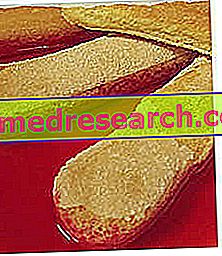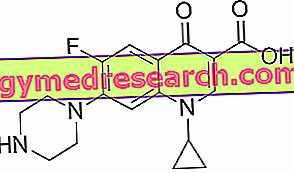What is Alchermes

The alchermes is red, medium alcohol (about 30 °) and quite sweet. Its basic ingredients are: water, cinnamon, cochineal (red coloring additive of animal origin), mace, cloves, cardamom, vanilla, rose water, granular sugar and pure alcohol (95 °).
recipe
Ingredients Alchermes (from Wikipedia)- 350 g of 95% ethyl alcohol
- 350 g of sugar
- 500 g of water
- 5 g of cinnamon in sticks
- 4 g of cochineal
- 1 g of cloves
- 1 g of cardamom
The recipe of alchermes can also be reproduced at home; the procedure is simple:
- let the spices soak in alcohol and in 2 dl of water, inside an airtight container, for a duration of about 15 days (shaking it twice a day).
- Melt the sugar in 3 dl of boiling water and (after letting it cool) add it to the macerated; let it rest for a day.
- Strain and bottle by adding rose water.
Check out the video recipe of Christmas Cookies - Peaches in alchermes - below the video preview
Christmas cookies - Peaches at Alchermes
X Problems with video playback? Reload from YouTube Go to Video Page Go to Video Recipes Section Watch the video on youtubeUse of alchermes
Alchermes is a liqueur widely used in confectionery for the preparation of bagne, for soaking, for coloring the bases and creams, etc.
At one time, alchermes was also widely used in direct consumption (especially by women) but, both for its excessively "caramel" flavor, and for a rejection of the cochineal dye (extracted from insects), on the day of today it is no longer a customary beverage.
In past centuries, alchermes has also played the role of "elixir" (soothing and antispasmodic against pertussis, neuralgic diseases, renal colics and retention of urine) and vermifuge, but it was simply popular legends. To date, alchermes is still used (fortunately in an extremely localized manner) as a remedy for "worms" in children who, according to certain equally folkloristic beliefs, should arise as a result of big scares. Probably it is a diversion to be able to give the "sedative" to children too capricious.
| Nutritional composition of dessert liqueurs - Reference values of the INRAN Food Composition Tables | |||||||||||||||||||||||||||||||||||||||||||||||||||||||||||||||||||||||||||||||||||||||||||||||||||||||||||||||||||||||||||||||||||||||||||||||||
 | |||||||||||||||||||||||||||||||||||||||||||||||||||||||||||||||||||||||||||||||||||||||||||||||||||||||||||||||||||||||||||||||||||||||||||||||||
Nutritional values
| |||||||||||||||||||||||||||||||||||||||||||||||||||||||||||||||||||||||||||||||||||||||||||||||||||||||||||||||||||||||||||||||||||||||||||||||||
What appears certain and obvious, however, is that the promotion of the consumption of alchermes (such as spirits) in the very young is absolutely contraindicated and inadvisable, as it prepares the subjects to appreciate both the taste and the effects of nervine drinks.
Curious to learn that alchermes is present among the ingredients of a particular sausage: mortadella from Prato.
Background
The term alchermes derives from the Sanskrit (Indian language) krmi-ja, evolved in the Arabic al-qirmiz and in the Spanish alquermes . Krmi-ja is intended as a "red drink" (as well as kermes and qirmiz ), whose name derives the Latin-medieval terms crimson and carmine . In the literate sense, krmi-ja and qirmi z mean "worm" and "cochineal" ( Kermes vermilio ).
The first uses of the cochineal dye are to be located in Mesopotamia (II millennium BC); from here, it was then diffused in Persia, Turkey and Palestine and finally in Europe (VIII century BC). It is not so easy to identify the historical period in which the recipe for the well-known liqueur was invented, but it is certain that in Italy the alchermes came thanks to the Spanish import (people who obtained the recipe from the Arabs themselves). In the Bel Paese, the production of alchermes is documented starting from the Middle Ages by the sisters of the Order of Santa Maria dei Servi (Florence). Later, the Director of the Officina, Friar Cosimo Bucelli, made the original recipe (1743) official, handed down to the present day; the peak in sales and circulation would appear to be in the nineteenth century AD
Nutritional composition
On the tables of composition of INRAN foods the alchermes is NOT a food in itself but is framed under the heading Dessert liqueurs. There is not much to say about its composition: it is a spirit with a very high sugar and caloric content. Both simple carbohydrates and alcohol represent highly insulin-stimulating molecules, which is why alchermes (like all liqueurs) constitute a potentially fattening drink. There are no chemical-nutritional qualities and the average recommended portion (so to speak) of the adult is about 125ml / day.



